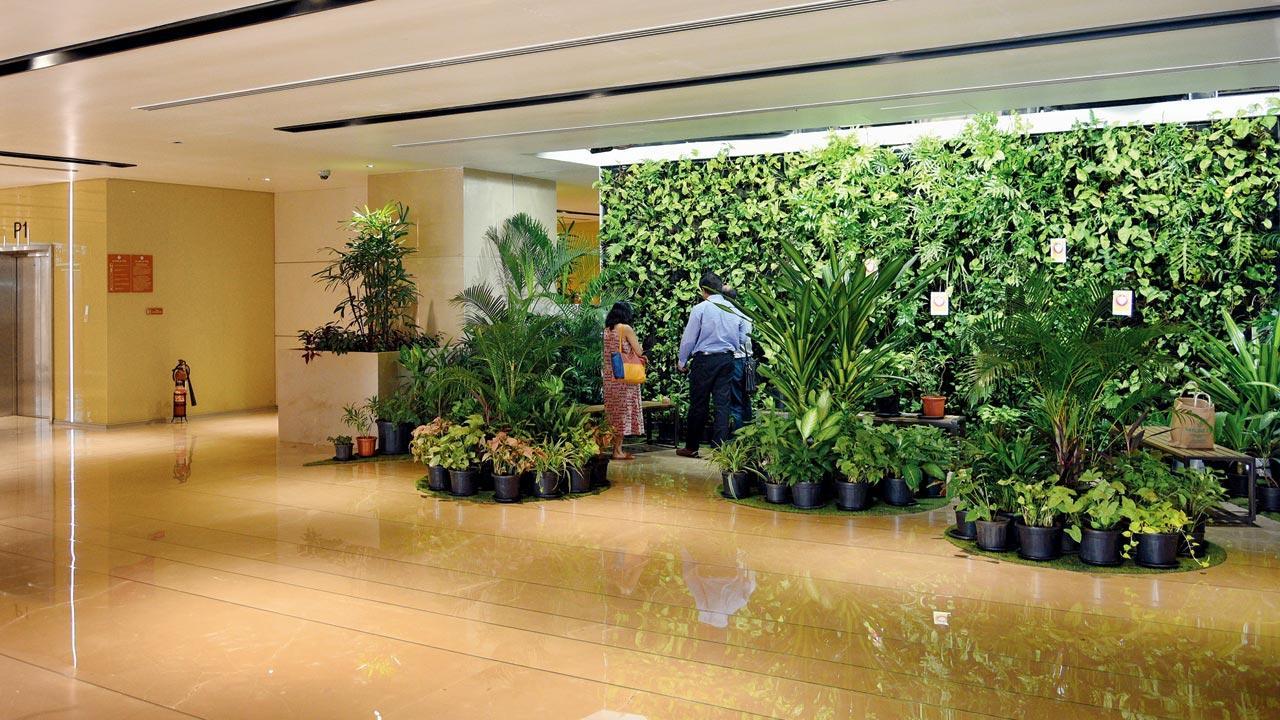A corporate experiment seeks to tap into nature’s nervous system to create a space of calming melody for its urban workforce

The bio-sonification space in the corporate park. Pics/Satej Shinde
There is something simple about the human mind that blinds itself to any signs of life other than the most obvious ones. So, when we heard of an experiment with bio-sonification in the city, it piqued our interest. Bio-sonification refers to the technology to turn bio-rhythms of natural objects into sound. “The science dates back to the 1960s, when an American scientist, Cleve Backster, used the polygraph on plants. The technology has evolved from studying natural sounds to the sounds emitted by the sun,” explains Rajesh Sundararajan, cluster lead of horticulture for Mindspace Business Parks.
ADVERTISEMENT
 The writer and Sundararajan (centre) test how touch affects the plant’s soundwaves
The writer and Sundararajan (centre) test how touch affects the plant’s soundwaves
Set up by the corporation, the garden in Mindspace Gigaplex in the suburb of Airoli, is an experiment to help employees interact with nature more directly. It involves a lush green wall of plants and foliage of different types, with benches that allow people to sit amidst the greenery. “Post the pandemic people want to be closer to nature than ever before. It is needed especially for corporate employees who work under a lot of stress,” he shares. But simply eating lunch in the garden with the mobile phone by your side is no help. The key is to be mindful of nature and get involved with it in that little time we have.
 Employees scan QR codes to access the meditative melodies
Employees scan QR codes to access the meditative melodies
The solution lay in the US-based app, PlantWave. Developed by musician and inventor Joe Patitucci, the app taps into the electrical impulses of the plant to match the frequency of programmed soundwaves. The technology is fairly simple to use. The company imported the technology to create a space that blends sound and experience. A Bluetooth speaker connects to the plant using two electrodes. Sundararajan then taps into the app that interprets the impulses from the plant in sonic form. Melodic and continuous, they make for a pleasant experience. We touch a leaf and the intensity of the rhythms change as if acknowledging our presence. This variation can also be caused by hydration levels in the plant, temperature or a pest invasion.
 A bluetooth-embedded speaker syncs with the app to interpret the plant’s impulses in sound
A bluetooth-embedded speaker syncs with the app to interpret the plant’s impulses in sound
“We have a QR code specifically designed for our employees that enables them to listen to these sounds whenever they choose,” he says, pointing to the codes hanging by every plant. “Each plant has a distinct sound and feel. Till date, we have had over 9,000 scans of the code proving that employees are drawn to it,” he remarks, adding that it has proven useful in helping employees battle high blood pressure and stress.
 Rajesh Sundararajan
Rajesh Sundararajan
For now, the garden is limited to employee use. The plan is to expand it to all Mindspace complexes, before any further experimentation will be thought of. “The implementation of the bio-sonification zone on our campus weaves seamlessly with our larger endeavour of shaping world-class business districts, while creating responsibly built, engaging, community-based ecosystems,” said Vinod Rohira, CEO, commercial business-K Raheja Corp.
As we leave, we imagine the same garden as calming, engaging and suddenly, more alive. While a quick search online would suggest the equipment is on the more expensive side, it is not often that one has a chance to listen to plants make music.
Log on to PlantWave.com for details
 Subscribe today by clicking the link and stay updated with the latest news!" Click here!
Subscribe today by clicking the link and stay updated with the latest news!" Click here!







